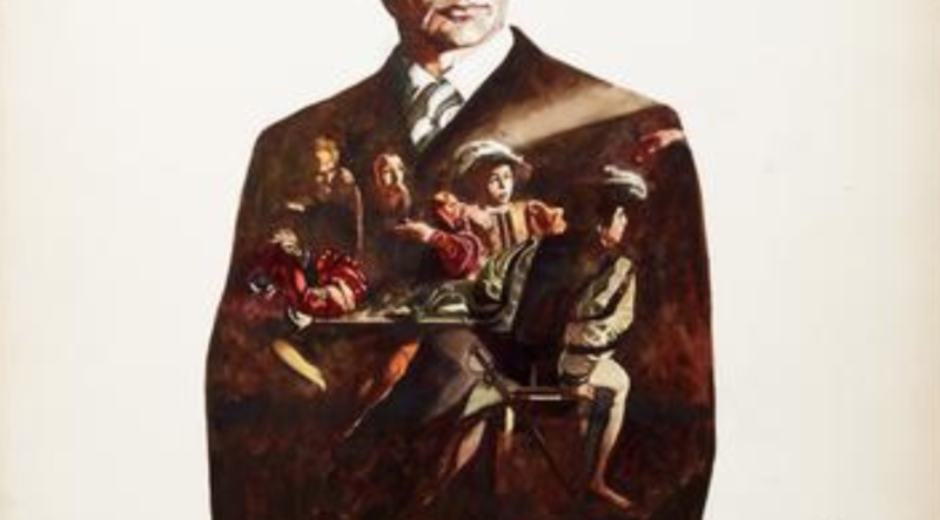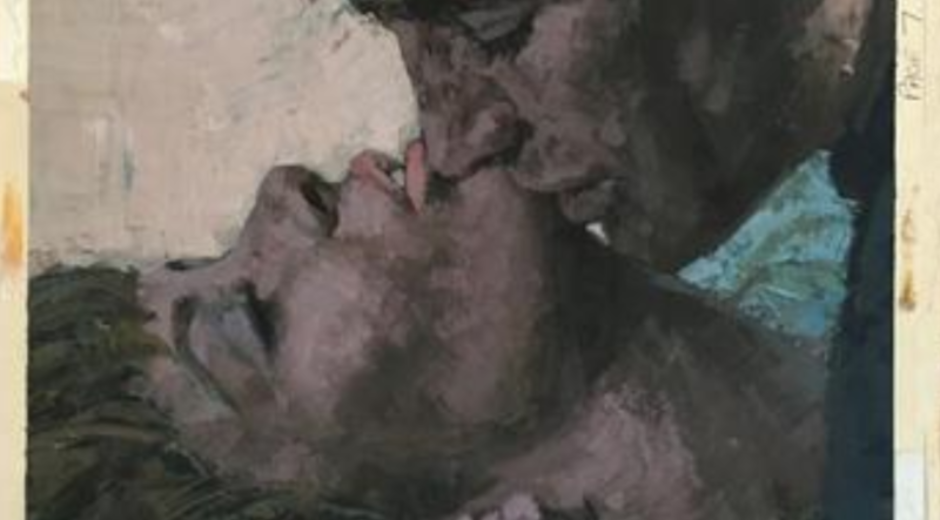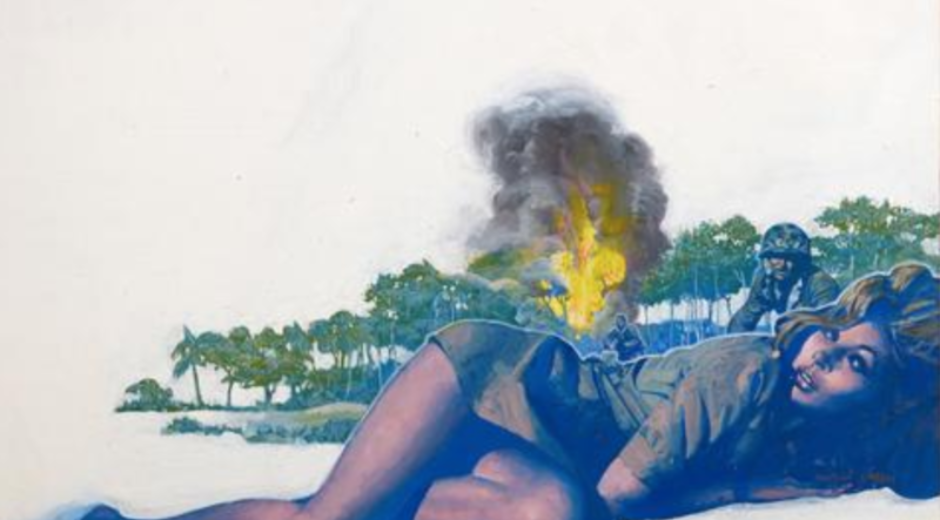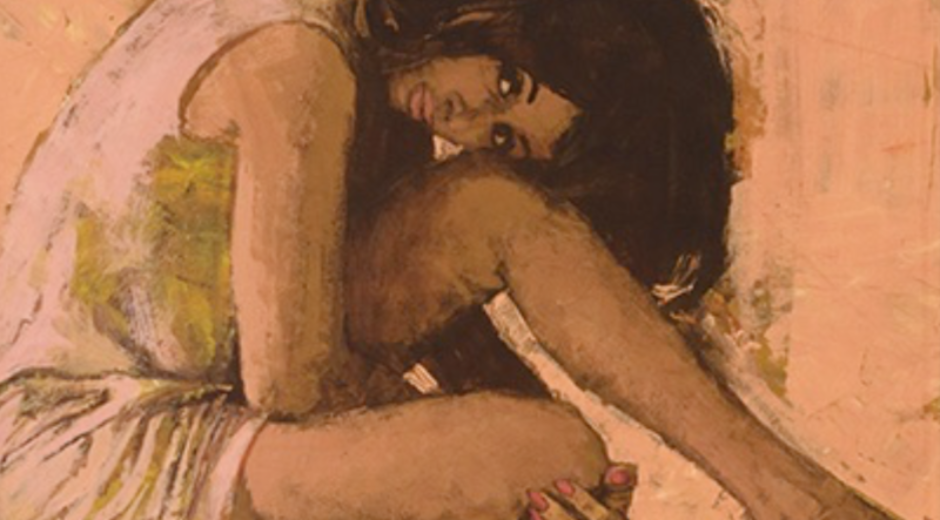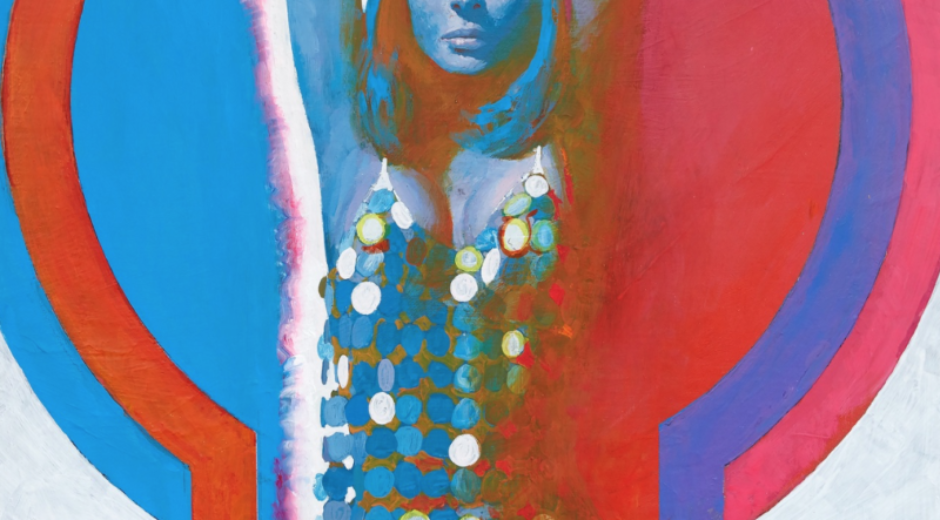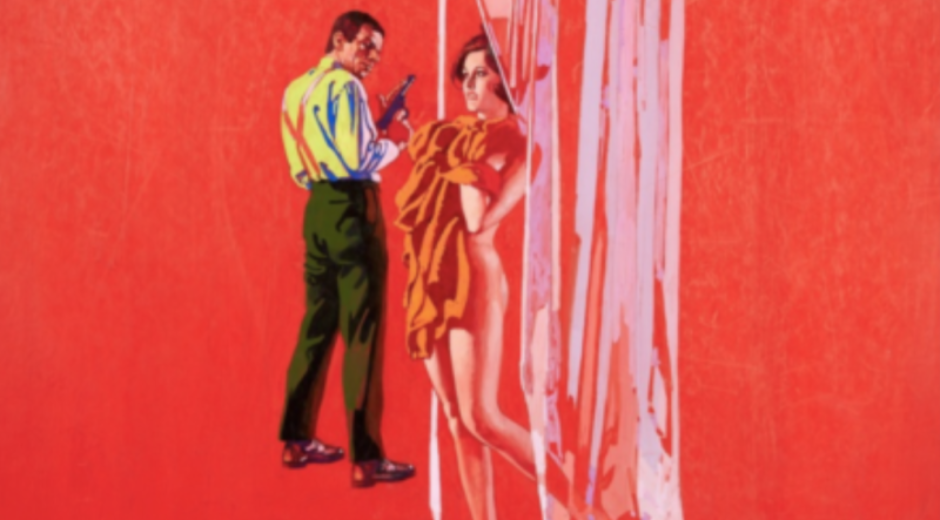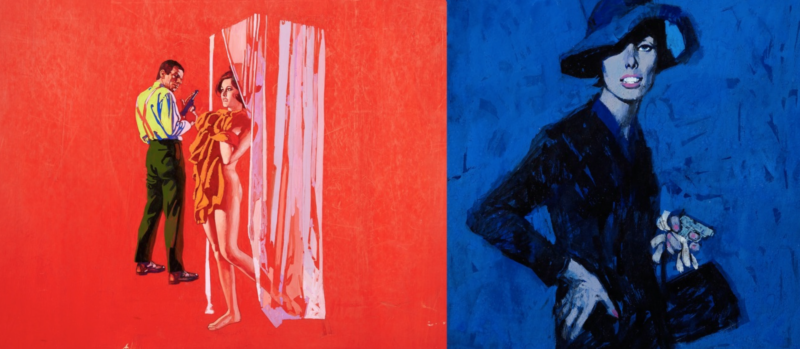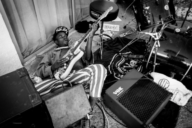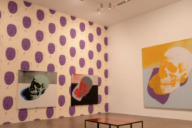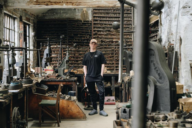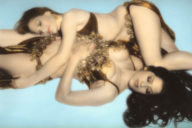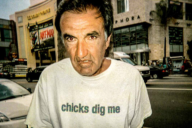UNCOVERED: ILLUSTRATING THE SIXTIES & SEVENTIES
For their first exhibition of 2018 the Lever Gallery returned to the pleasures of Pulp Fiction.
Pulp art rose up in the brand new world of the post-war 50s, and crested in the 60s as colour printing processes became ever more affordable. It lost out to the new kid on the block – photography – in the 70s, which ushered in a harder edged realism. Its appeal was its lack of subtlety, tempting readers into a best-selling world where men were men, women voluptuous, good was good and bad was really evil. It sold the promise of sex because sex always sells.
The visual language of Pulp was an obvious tight fit for a new generation of writers able to mould their output to suit the genre. Hard-boiled Mickey Spillane, the verbal Earl Stanley Gardner, escapists like Hammond Innes and Alistair Mclean and romantics like Helen McInnes sold in huge numbers alongside many more less memorable, and probably less talented, authors mining the same rich vein.
But what makes Pulp so fascinating, and its appeal so durable, was that it didn’t stop there.
By the 60s publishers figured out that it could be applied to completely different types of books and with a charming lack of tact Pulp was enlisted to shift works by authors you’d never expect to find shining a light round the murky depths of mass publication. The glamourous promise of Pulp eased the works of Simone de Beauvoir, Sinclair Lewis and CP Snow, along with many other high- brows, onto the bookshelves of a whole new readership that had probably never heard of them.
The show features more than 40 rare works by some of the most in-demand illustrators of the period: Gianluigi Coppola, Giorgio De Gaspari, Pino Dell’Orco, Renato Fratini, Michael Johnson, and Ian Robertson. Works that illustrated not only books but also the magazines that traced the same arc of popularity as their paperback cousins.
Pulp is the art of the hired gun, a shot from the hip produced to order on a short deadline. The artistic confidence and the technical skills involved were dazzling and are almost incomprehensible in this digital age. So no surprises that Pulp is once again finding its place in the sun, especially in the US, birthplace of Pulp, where demand is driving sales of $1,000 a single collectible paperback.
The fiction that drove Pulp is largely forgotten, waiting undoubtedly for its own rediscovery. The Lever Gallery Uncovered exhibition reveals that it’s Pulp Art, with its offer of a wondrous escape into a gloriously inauthentic past, that is now the story.

